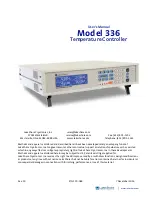
5
www.balmar.net / Customer Service: +1 (360) 435-6100 x1 / Technical Support: +1 (360) 435-6100 x3
Tech Service is available Monday - Friday (8:30am - 7:30pm EST)
MC-620 REGULATOR INSTALLATION
The following information is intended to provide the installer with the basic information required to complete
installation. This section of the installation manual will deal with mounting, wiring connections and basic
programming for battery type. Additional information regarding advanced programming adjustments and
troubleshooting are addressed later in the manual.
UNPACKING THE BOX
Your Max Charge MC-620-H regulator kit is packaged with the following items:
•
Max Charge MC-620 Regulator
•
54” Wiring Harness for the 96-Series Alternator
•
Magnetic Programming Tool
•
MC-620 Quick Start Guide
•
Spade Terminal for Voltage Sense wire.
If any of the listed items is not included with your regulator kit, call our customer service department at +1-360-435-
6100. Please note - If your regulator box is marked Max Charge MC-620, without the “H” designation your kit will
not include the wiring harness.
LOCATE AND MOUNT THE REGULATOR
Choosing a mounting location for your voltage regulator should be determined based on the following factors;
distance from alternator, distance from inverters, transmitters and other sources of RF noise, convenient access
and readability of the display. The regulator wiring harness is 54 inches long, providing a three to four foot radius
for mounting. Ample airflow is essential for the regulator’s proper operation. Ensure that the regulator is free from
obstructions that restrict air movement around or below the regulator’s aluminum heat sink. While the regulator
is designed to operate safely in conditions typical of a marine engine compartment, the regulator may be better
protected, and easier to use and monitor if mounted outside of the engine compartment. The max operating
temperature is 90°C.
Should it be necessary to install the regulator further than 54” from the alternator, ensure that any wire extensions
are properly connected, as resistance in the harness wiring can affect charging efficiency. If harness length must
reach beyond approximately 8’, replace the RED power and BLUE field wires with larger gauge wire that’s sized to
ensure voltage drop < 3%.
BASIC WIRING INSTALLATION
The regulator’s wiring harness includes six wires required for standard installation. Four of those wires are
connected to the regulator via a Ford-style plug connector that’s pre-installed on the regulator. These wires include
the Ground (BLACK), Power (RED), Ignition (BROWN), and Field (BLUE). The other two wires are 48V Voltage
Sense (RED) and Stator (WHITE).
The sense wire in the harness is designed to connect to the positive post on the alternator. For most accurate
sensing and the best charging performance, consider sensing the battery voltage directly at the battery. This wire
is not included. Ensure that appropriate fusing for the wire run is used, and tape or cap of the unused sense wire in
the harness.
Connecting the 12V Power lead from the regulator to a 48V battery bank or the B+ Terminal of the
alternator will destroy the regulator. This is not covered under warranty. Only connect the 12V
power lead to a 12V battery, typically the engine starting battery.






































